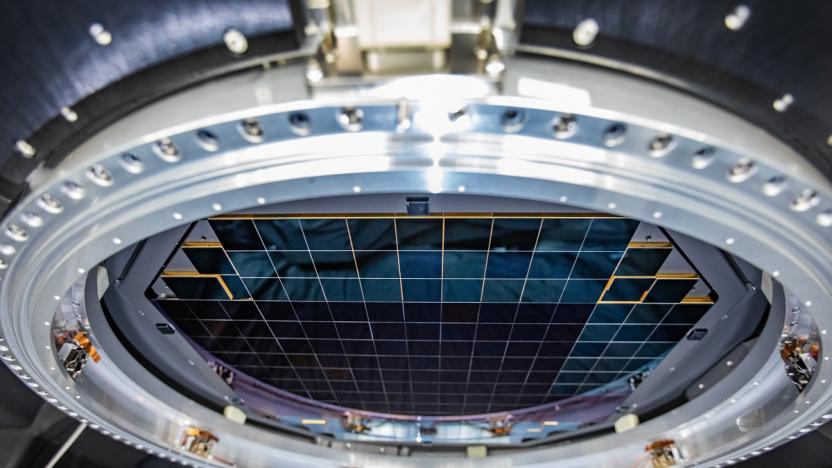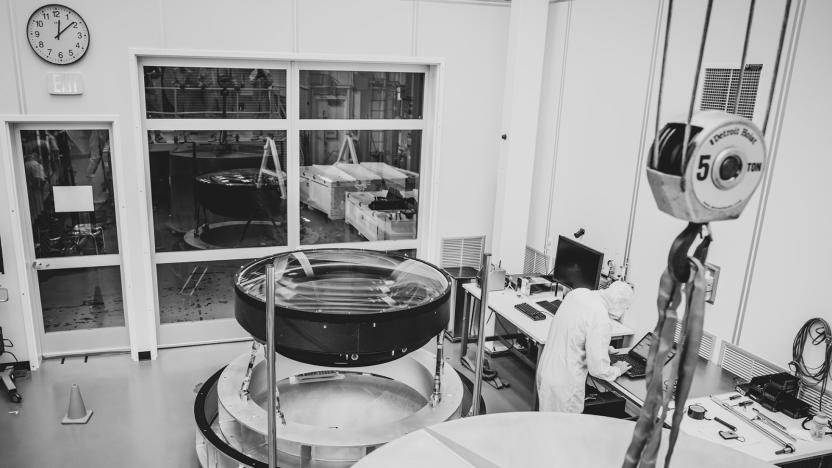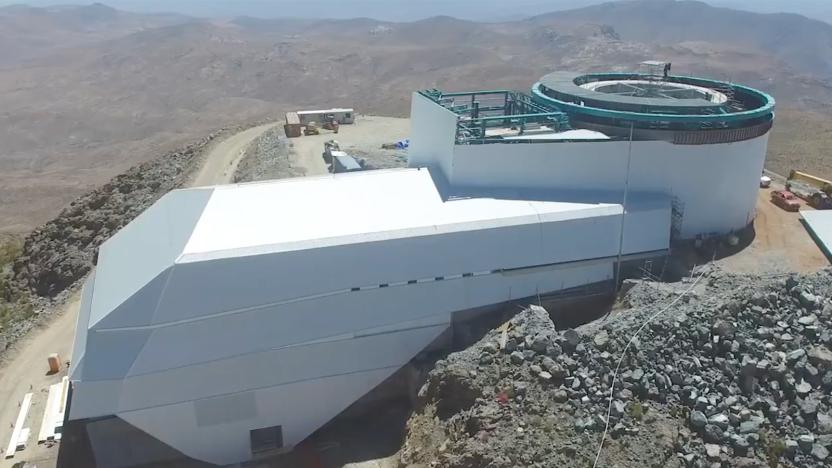LSST
Latest

Researchers capture the world's first 3,200-megapixel digital photo
Stanford researchers have taken 3,200-megapixel photos, the largest-ever, using sensors that will be part of the world’s largest digital camera, according to a SLAC National Accelerator Laboratory blog post. The camera will be installed in the university’s Legacy Survey of Space and Time (LSST) telescope in Chile, which will study dark energy, dark matter and create the “largest astronomical movie of all time.” You can also see small, dim objects other cameras can’t capture -- the resolution is so high that you could see a golf ball from 15 miles away, and the sensors can spot objects 100 million times dimmer than visible with the naked eye.

Moving the largest high-performance lens ever built
Not all the most interesting telescopes need to live in space. The Large Synoptic Survey Telescope (LSST) will sit on top of a mountain in Chile some 8,800 feet up and snap 3.2-gigapixel (3,200-megapixel) images of the sky every 20 seconds. All told, it will be able to snap digital images of the entire southern sky every few nights. By taking relatively long 15-second exposures, scientists will be able to study the early universe, track dimly-lit asteroids and better understand dark energy.

Video offers peek at ultra-wide Large Synoptic Survey Telescope
The Large Synoptic Survey Telescope has been a long time in the making when work on its mirrors started in 2007. It's finally coming together, though. The LSST team has released a brief clip showing progress on the Chilean facility as of the end of 2017. Not surprisingly, it's huge -- that giant 3.2-gigapixel camera (potentially the largest in the world) and ultra-wide optics (3.5 degrees in diameter) take up a lot of space by themselves, let alone the rest of the complex.

World's most advanced digital camera will power the LSST telescope
If you think the 50-megapixel sensor in your new DSLR is hot stuff, you haven't seen anything yet. The Department of Energy has given the all-clear to build the Large Synoptic Survey Telecscope's 3.2-gigapixel digital camera, which promises to be the most advanced in the world. It's not just the resolution (which easily eclipses that of sophisticated airborne surveillance cams) that lets scientists make such a bold claim. It will photograph patches of sky 40 times larger than the Moon, and pick up more light than any optical telescope on Earth -- both important factors when you're trying to study the early universe, track poorly-lit asteroids and understand dark energy. While the LSST's camera won't even see its first test runs until 2019, the output could easily justify those years of work.

New telescope will be a high-resolution window to the universe
That 3D rendering up there is a new telescope from the National Science Foundation that promises to solve the mysteries of the universe -- or at least take some truly big pictures. Fitted with a 3,200 megapixel camera, the Large Synoptic Survey Telescope will be the largest digital camera in the world. Once operational, it will scan the entire night sky a few times a week for ten years and is expected to provide scientists unprecedented access to previously inscrutable parts of the cosmos. The camera will literally shed light on dark energy that is believed to accelerate the expansion of the universe, but has long evaded definitive probes. Apart from capturing images of exploding supernovae at an unfathomable distance, it can detect and track asteroids in our planet's vicinity.


